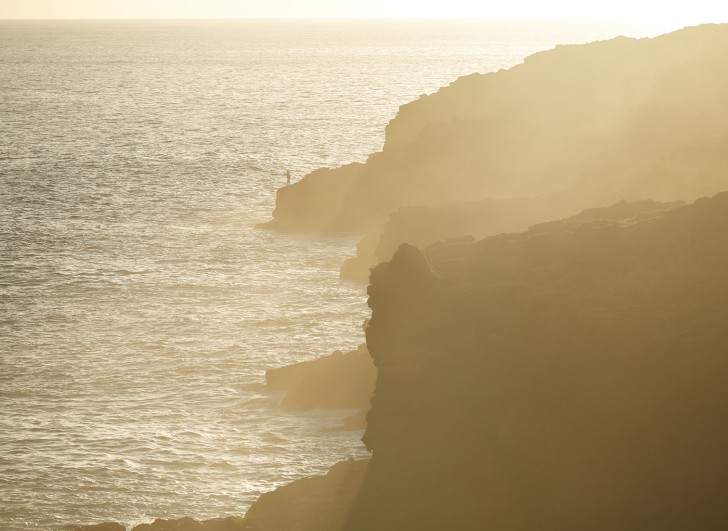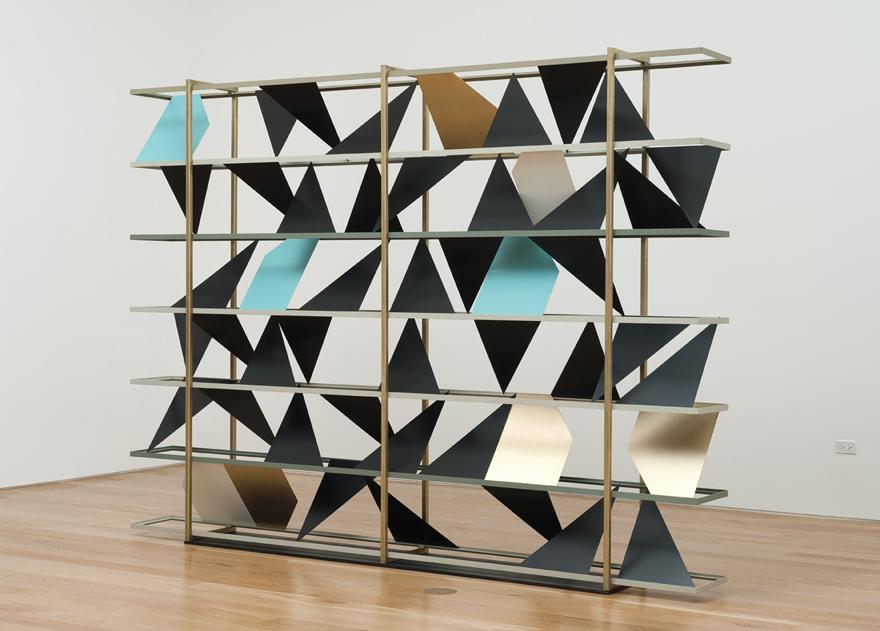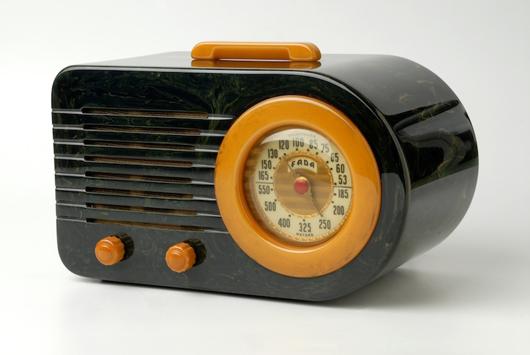
07.28.15
The Making of
Gyrecraft by Studio Swine
We’d like to think that for every project that involves spending long nights at the office, there will also be one that takes you out of the studio and on a real adventure. Not ones to leave it to chance, London-based designers Alexander Groves and Azusa Murakami of Studio Swine have made their mark by incorporating elements of travel and exploration into their practice. No wonder that their latest project is accompanied by stories and images so rich that the journey itself and the way it was documented appear almost more precious than its physical manifestations.
At a material level, Gyrecraft is a collection of high-end objects made with plastic debris reclaimed from the ocean. But the significance of the project lies in the complex historic and cultural references woven into its narrative. and assembled into a compelling critique of the modern concept of luxury. Taking its name from ocean gyres, a system of swirling currents that trap plastic waste floating in the water, the project involved Groves and Murakami embarking on an expedition across the Atlantic Ocean and through the North Atlantic Gyre, one of the five major oceanic concentrations of plastic pollution. Using debris collected from the water, the designers melted and transformed plastic waste into five objects that serve as vessels for region-specific narratives, reflecting through their form and function the unique skills, resources and heritage of the island cultures inhabiting each area.
Stories like this ought be told from start to finish, so we recently caught up with the designers to find out more about the project and their adventures at sea.
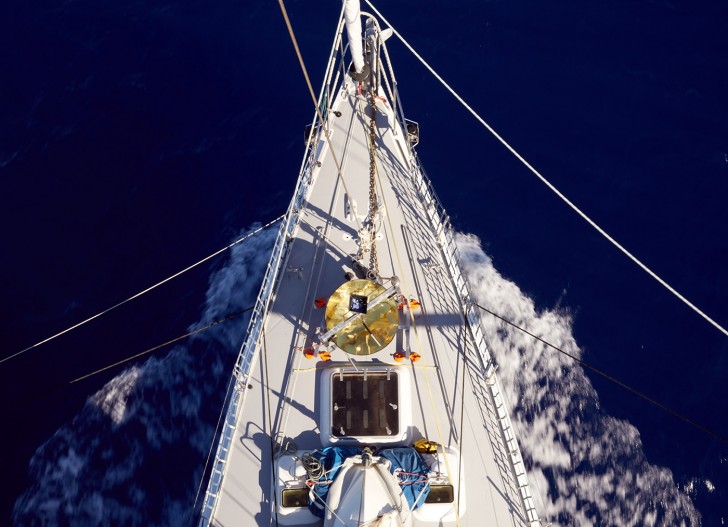
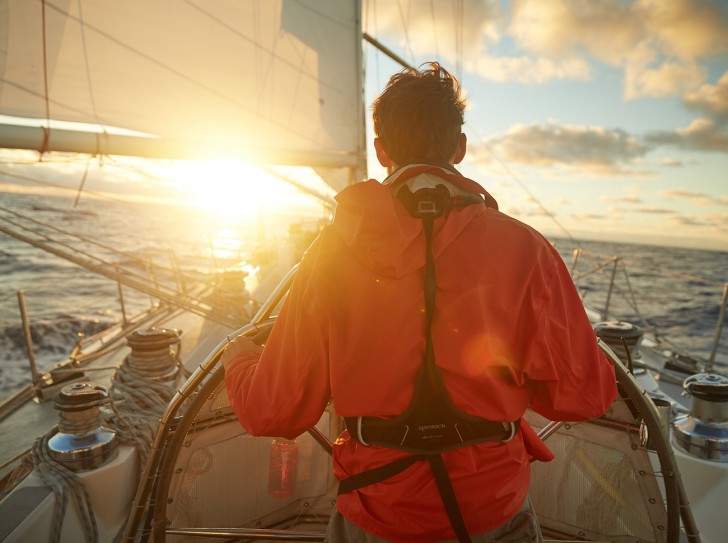
How did you find yourself on a boat sailing through the North Atlantic Ocean?
Years ago, we learned about the plastic gyres, these stretches of water where plastic pollution collects in the middle of the ocean. First we started looking very locally, collecting plastic that had washed up on the beaches and making experiments. It took us a long time to find the right fundraising but eventually we got an opportunity to go on this amazing scientific vessel that’s a 72-foot long sailing boat. It was full of scientists and researchers working on the problem of plastic pollution and we joined them for a 10-day trip that went from the Azores to the Canary Islands. It went over 1000 nautical miles across the North Atlantic Gyre.
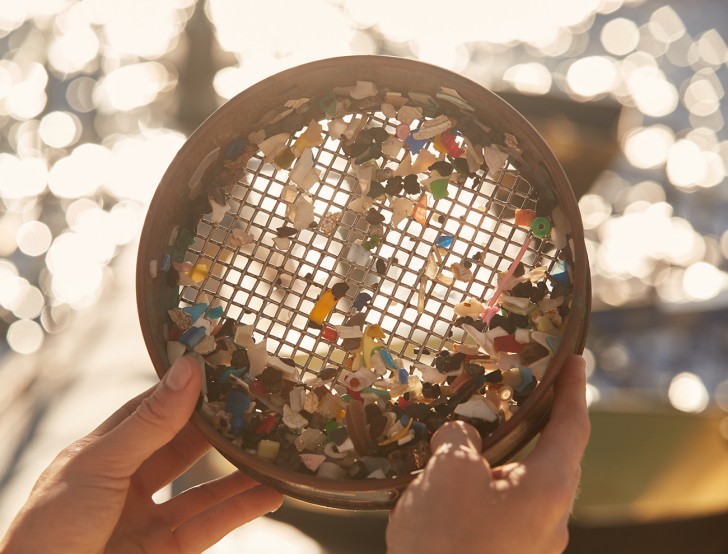
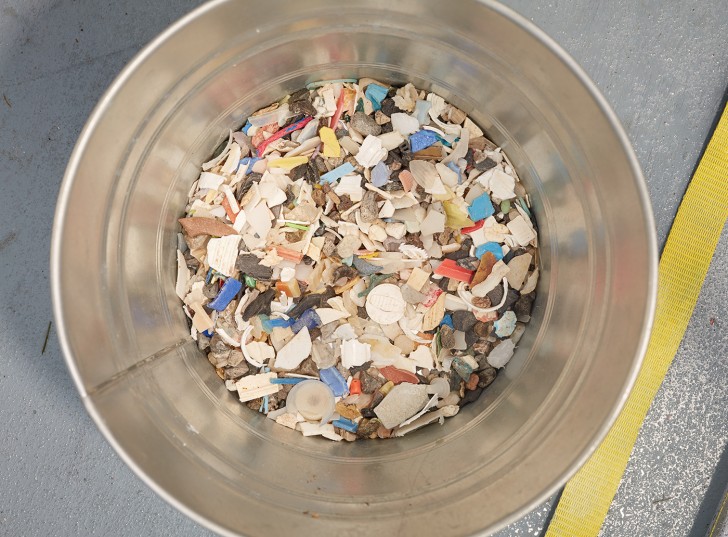
How did you collect and treat the plastic debris?
As part of the expedition, the crew would put out nets every day, just trawling the water as the vessel sailed along and collecting the plastic. The truth is that it takes a really long time to have a large amount so we were also picking up whatever washed up on the coast.
Then we would separate the pieces by color, which also took a very long time, but this process allowed us to shift the perception of plastic as a waste material. It’s considered to be completely disposable and not given any value but actually by the time you collect it, color-sort it, wash it and dry it, it becomes incredibly precious.
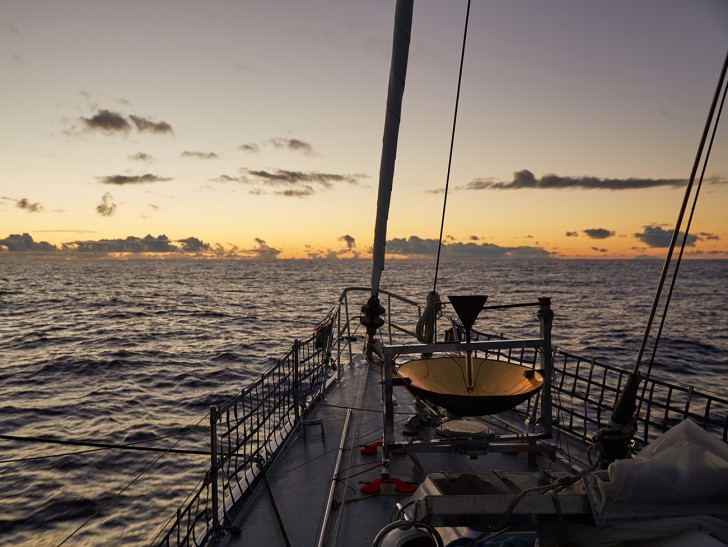
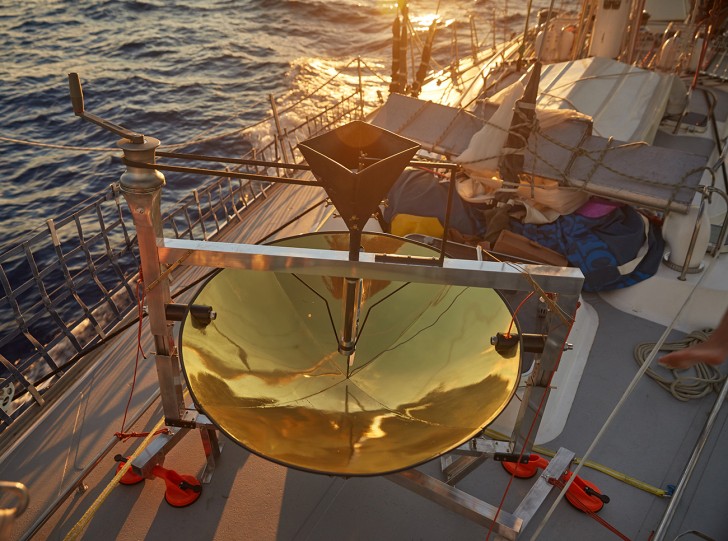
What tools and techniques did you use to transform it into a desirable material?
We made a machine that we could take on the plane to get to the Azores and assemble it on the boat. Andrew Friend, who’s a sailor, helped us with the design and making sure that it could work onboard. This was important to us because we were really interested in the tradition of making objects actually at sea, which is what maritime craft is all about – during long voyages you get those moments at sea when there’s no wind and if you’re a whaler there’re no whales. In traditional cultures you would then bring out your tools and start working with whatever material you had at hand.
The machine, which we called Solar Extruder, was essentially a large parabolic mirror that took the energy of the sun and concentrated it into a single hot spot. We used it to melt the plastic, which was then forced through a narrow pipe onto a printing bed. This was a quite advanced technique but we also used more old-fashioned methods, simply heating up the plastic in a pan and squashing it between molds to shape it.
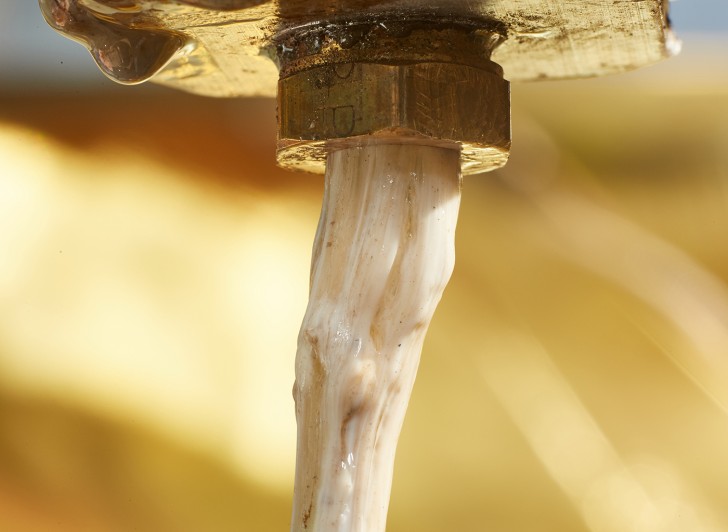
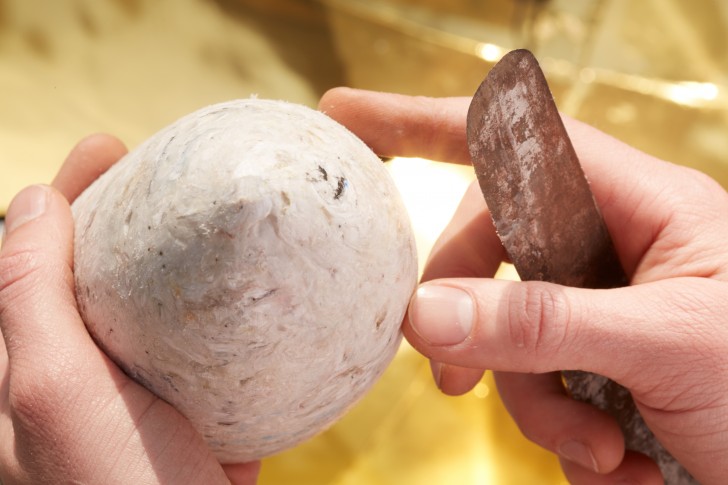
The amazing thing is that you can treat the resulting material just like wood, you can cut it with an ordinary jewelry saw; you can do all kinds of things with it and buff it up. And what’s interesting is that you get this kind of terrazzo effect, which has all the different colors of plastic and even pieces of other materials that are floating in the sea like little wood chips. We used also mother of pearl and Polynesian coconut shells so that all these traditional materials were inlaid in the plastic.
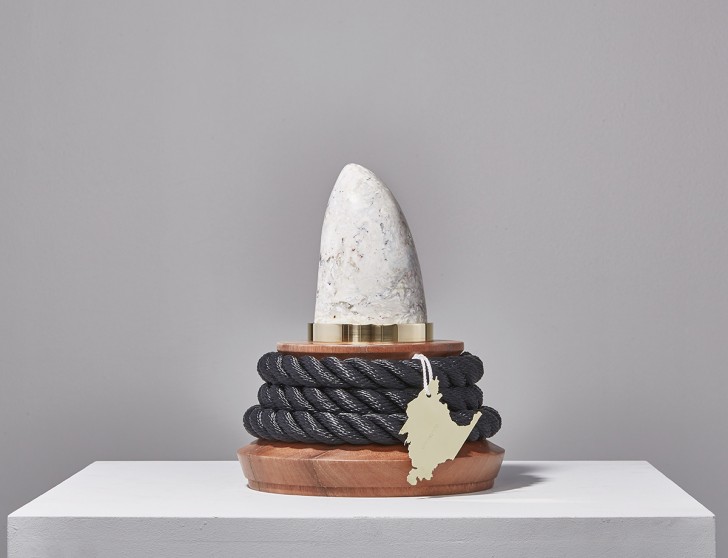
What are the different natural and cultural references that influenced the aesthetic of the objects?
Each of the five objects represents one of the main oceanic gyres and it references the specific maritime crafts practiced by cultures inhabiting the surrounding islands. The North Atlantic object was inspired by the incredible history of Scrimshaw, which is the art of engraving on whale teeth most common in the Azores. The islands had a really strong whaling industry until the 1970s, and they still have the largest Scrimshaw collection in the world. At the start of our expedition, we met with an artist who showed us the technique and that’s what inspired the shape of the object, which is essentially a whale tooth, crafted from white and off-white plastic. We mounted it on a brass ring because it’s a material commonly used for sea equipment and it doesn’t corrode. The base was made from reclaimed mahogany, a popular material for boats. By doing so we introduced plastic as a new resource, framed by traditionally used materials.
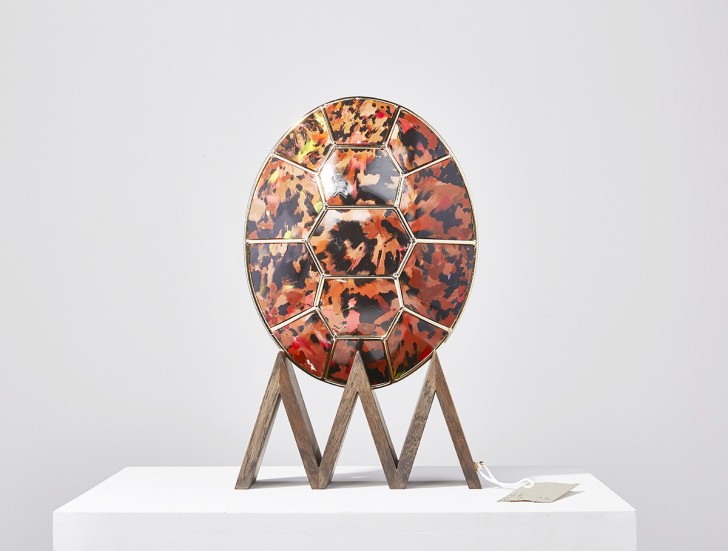
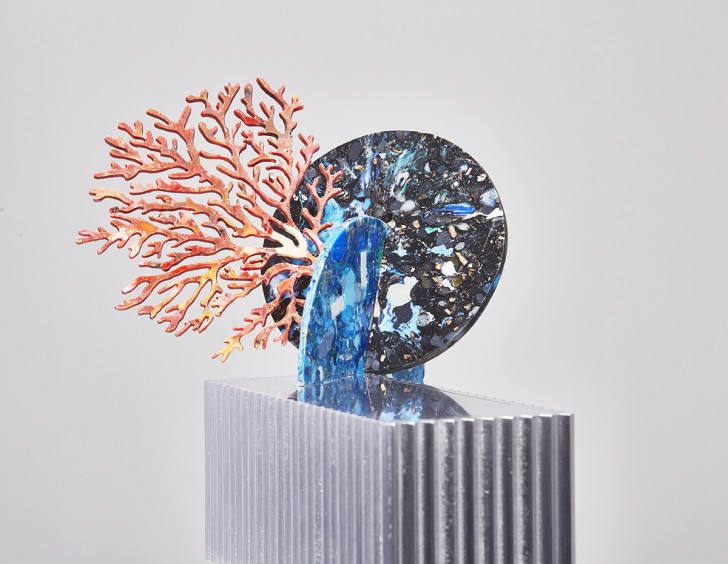
What about the other pieces?
Since we only went to the North Atlantic Gyre, the other objects in the collection had to be sort of imagined and built around cultural references. The South Pacific object was influenced by pieces crafted by the Polynesian tribe Tiki that we saw in the British Museum. We became fascinated with the gift-giving culture that is unique for these islands and the exotic materials they used to craft the pieces, such as turtle shell, black pearls and tropical hardwood.
The Indian Ocean piece was inspired by the tribe of Sentinelese people who live on the Andaman Islands and who are the last pre-Neolithic tribe in the world. That region has a very heavy shipping trade so they have access to his brand new synthetic material in form of plastic washing up on their shores and also metal from containers that crashed on their beaches sometime in the 1980s. Through the design of the Indian Ocean object, we speculated how they could use these materials to create new value. So all of the objects have different references and stories running through them.
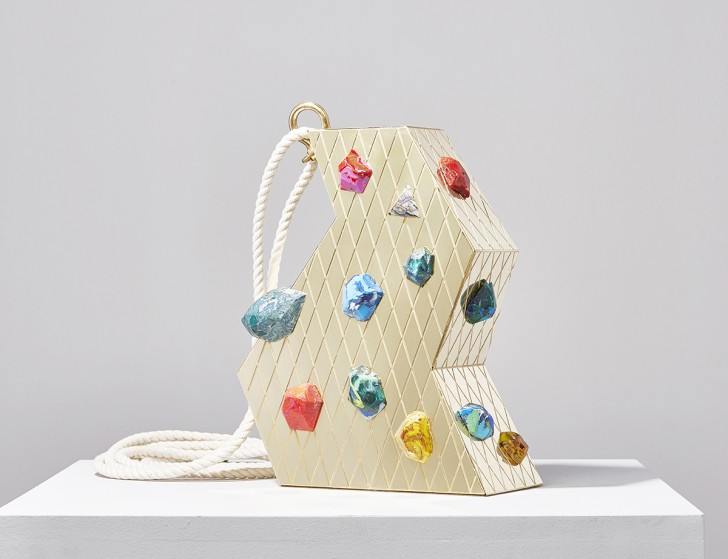
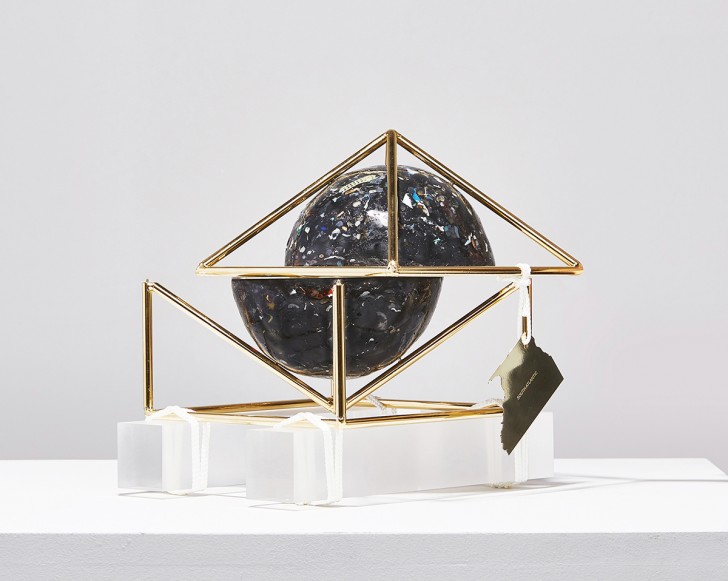
How much control did you have over the final look of the pieces?
We’ve been working with plastic for about three years and at first we didn’t have any control over it, the early experiments were completely random. Now we know what we’re doing and we’re much more in control. I think that the best example of what you can achieve with plastic in this collection is the turtle shell piece. To make it we separated red, orange and white pieces and then spread the different colors in a way that they merge into each other and create a kind of blur across the surface which resembles really closely the look of turtle shells. So the level of control over the finish was actually quite high. There is always an element of randomness but that’s something that we embrace.
A big part of your practice is investigating the potential of turning low value materials into high-end and desirable objects. What does this particular project say about the contemporary notion of luxury?
I think that the really interesting thing in luxury design is the potential for shifting the focus from precious materials to design itself and the process that goes into it. The perception of luxury today is centered around noble materials: marble, bronze and any other material that has a value in weight regardless of the form it takes. The challenge for us is to make luxury goods from materials that need to be transformed through design to become desirable. It’s really the idea that the craft, the process and the time that you bring into define the value of an object.
